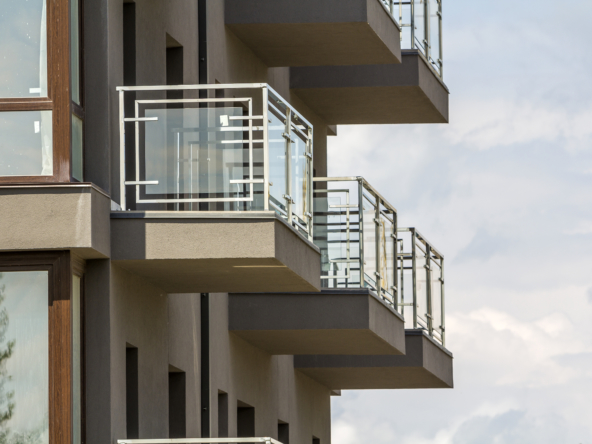Multi-family housing goes by several names, but this one says it all: it is a building or complex that contains several separate houses in which several families live independently from one another. Apartment buildings are the most common example, but multi-family homes can come in many configurations.
There are many reasons why multifamily properties are attractive for real estate investors and residents: they save on building costs, can contribute to create a community, and make it possible to share amenities and expenses that would be out of reach for a single-family home.
Multifamily dwellings are often built or purchased as part of a real estate investing strategy based on rent payment, but multifamily housing is also frequently managed as a condominium, where each dwelling unit is owned independently instead of leased.
Types of multifamily housing
There are so many types of multifamily dwellings that Wikipedia has an entire page devoted to listing them. Let’s just go over the most common types of properties used as multi-family housing units:
Apartment building
We all know these: they tend to be multi-story buildings with one or more apartments on each floor. These are excellent investment properties, especially if they are mixed-use buildings with some business rental properties included in the mix.
Condominium
This name refers more to the ownership model than the shape of the building itself. Each individual apartment is owned independently, and common areas are co-owned proportionally.
Duplex, triplex, and Four-plex
These are fun names for a two-house, three-house, and four-house building respectively. They can be side by side, sharing a wall, or one on top of the other. They usually share the basement, porch, and other common areas, and are a great starting place for building a residential property portfolio.
Tenement
This term usually refers to very large apartment buildings built in the late 19th and early 20th century to provide affordable housing to factory workers. The name has slowly become synonymous with a poorly-cared for building, but that is more of a property management issue.
Tower block
An apartment tower or tower block is a high-rise building full of apartments. This is another great option for an investment portfolio, since the apartments in these blocks come in many shapes or sizes, making it easier to attract a wider array of renters
Investing in multifamily dwellings
Real estate investors recommend starting your portfolio with some residential buildings you can rent, so you have a steady cash flow that will allow you to diversify later on.
There are several reasons why experts recommend investing in multifamily buildings if you can, instead of in individual properties:
An easier loan
It may seem counterintuitive, but banks are more likely to give you a loan for a multi-house building than for a single-family home, even if you intend to use it as an investment property.
Besides having a relatively easier loan approval process, you may also get more favorable interest rates, since the bank considers it to be a lower-risk investment.

Steadier cash flow
If you are renting a single-family home and your renters leave, how much rental income will you receive until you find a new tenant? ZERO.
However, a multi-home property gives you safety in numbers: if you have 5 rental units and one renter leaves, your income will be reduced by 20%, but you will still receive 80% of what you expected to.
Tax Breaks
The Low-Income Housing Tax Credit (LIHTC) is a really cool twist that property developers and investors often take advantage of. The LIHTC is a federal program that encourages developers to create low-income housing, rewarding them with a 10-year tax credit.
Originally created in 1986 as part of the Tax Reform Act, LIHTC is not a tax deduction per se, but rather a discount on your taxes for a specific dollar amount, which you can get for up to 10 years if your property and rent meet the conditions.
Every state manages LIHTC differently, so you should look into the Qualified Allocation Plan (QAP) of your state before investing, to find out what the conditions are to qualify for the LIHTC.
Affordable property management
If you own one or two rental houses, property management is something you probably dream of, but can’t really justify as an expense. However, when we’re talking about 4-6 properties or more, suddenly property management looks like a good investment in proportion to the demands on your time and the income you receive from the property.
A good property manager can take care of maintenance, repairs, rent collection, marketing, screening prospective tenants, and much more – and if you have enough units, investing in property management will free you from all of these duties while not taking a significant percentage of your margins.
Much more scalable
If you’re going to buy a house, you will have to look into what’s available in the real estate market, make a shortlist, choose the best options and get them appraised, deal with the owner, negotiate, get a loan, maybe even do some remodeling or freshening up… it’s a lot of work.
Now imagine buying a duplex: you search for properties, find a suitable one, negotiate and get a loan, buy… but now at the end of the process, you have two houses instead of one!
It goes without saying that it is easier in practical terms to buy an apartment building with 10 apartments than it would be to buy 10 separate houses, with all the appraisal, negotiations, and paperwork.





